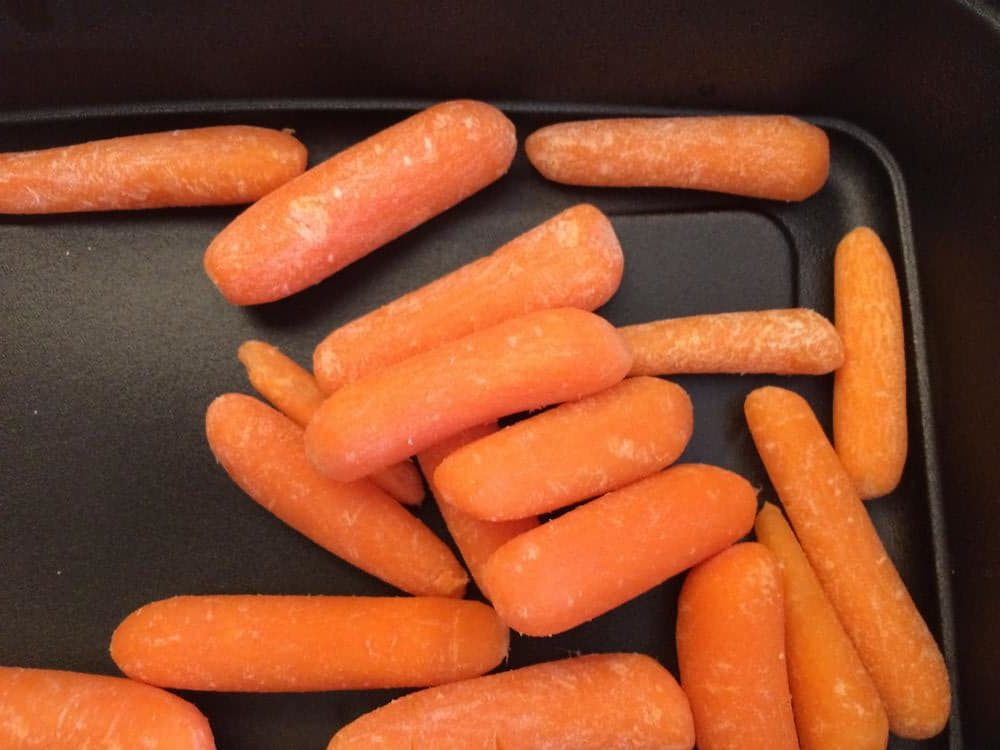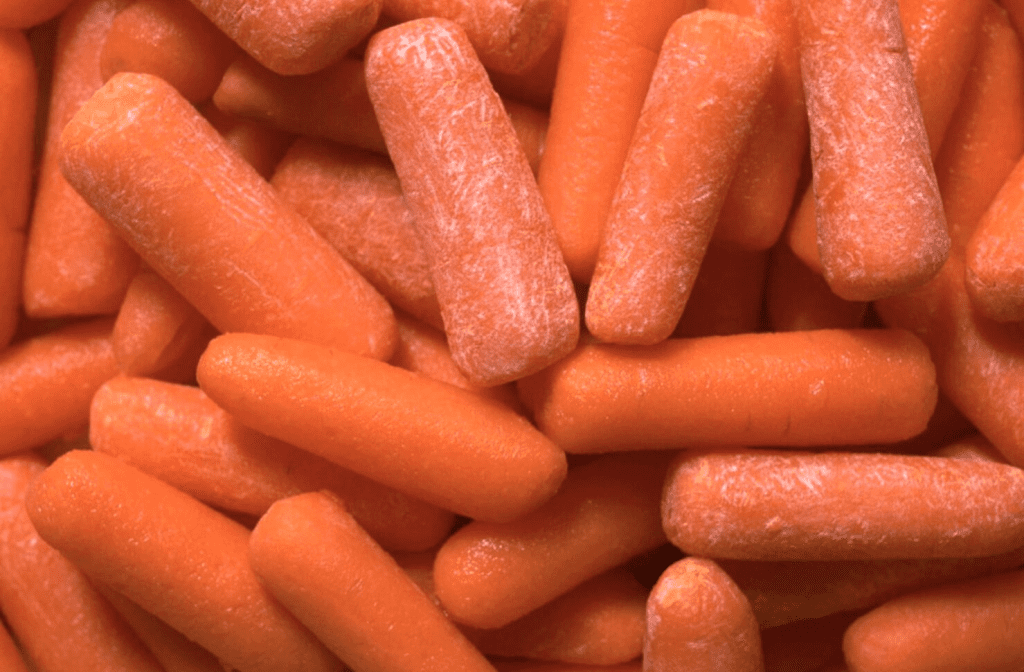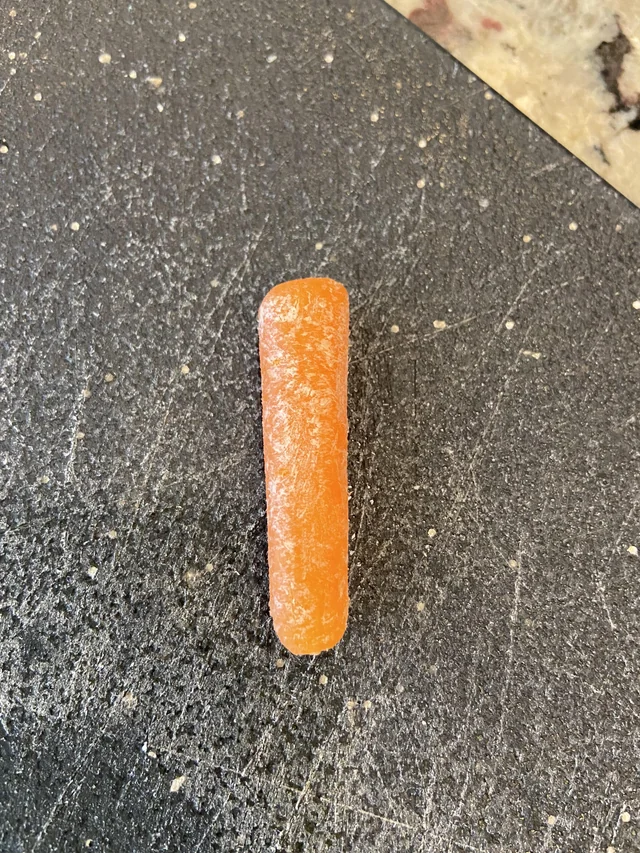Fresh produce can be expensive, and it’s frustrating when your fruits and vegetables go bad shortly after bringing them home. Baby carrots are one of those veggies that seem to go through a strange transformation after a few days. Have you ever noticed a fuzzy white coating on them and wondered if they’re still safe to eat? You’re not alone! Many people assume that this is a sign of mold or spoilage, but that’s actually not the case. Let’s explore what this white coating is, why it happens, and how you can prevent it.
What Is The White Coating On Baby Carrots?

This mysterious white layer is often called “carrot blush” or “white blush.” It may look alarming, but it’s actually just a sign that the carrots are dehydrated. Carrots have a high water content, and when they start to lose moisture, this white coating appears. Essentially, your carrots are thirsty!
The white blush isn’t harmful, and it doesn’t mean the carrots are spoiled. In fact, this phenomenon is simply a natural reaction to the carrots drying out. But how does this happen so quickly after buying them? Let’s break it down.
Why Does Carrot Blush Occur?
Baby carrots are unique in that they’re typically cut from larger carrots and shaped into the small, snackable size we all love. During the cutting process, their outer protective skin is removed. Without that skin, baby carrots lose moisture faster than whole, unpeeled carrots. This dehydration is what leads to the white blush, especially if the carrots aren’t stored properly.
When you see the white coating, it means that the carrots are starting to lose their water content. It’s a simple sign of dehydration, not decay. So, don’t worry—your carrots aren’t turning into a science experiment gone wrong!
How To Restore Baby Carrots With White Blush
Thankfully, there’s a quick and easy fix for dehydrated baby carrots. When your carrots start showing signs of white blush, you can restore their moisture with this simple trick:
- Fill a bowl with cold water.
- Submerge the carrots and let them soak for about 10 minutes.
This rehydration process helps the carrots absorb moisture, which often removes the white coating. Even if the blush remains after soaking, the carrots are still perfectly safe to eat. They’re just as crunchy and delicious as ever!
Are Carrots With White Blush Safe To Eat?
Yes! Carrots with white blush are absolutely safe to eat. The white coating is purely cosmetic and doesn’t affect the flavor, texture, or nutritional value of the carrots. As long as your carrots don’t have a foul odor, slimy texture, or visible mold (which would look different from the white blush), they’re fine to consume.

If you’re not a fan of the appearance, you can always soak them as mentioned earlier or cook them in creative ways, which leads us to the next point.
How To Use Carrots With White Blush In Recipes
If the appearance of white blush on your baby carrots is off-putting, don’t rush to throw them away. Instead, turn them into something delicious! Carrots are incredibly versatile, and even those with a bit of dehydration can be used in a variety of ways:
- Roast them: Toss the carrots with olive oil, salt, and pepper, and roast them in the oven. Roasting enhances their natural sweetness and gives them a caramelized exterior that’s hard to resist.
- Blend them into soups: Carrots are a great base for soups. Puree them with broth, onions, and garlic for a comforting bowl of carrot soup.
- Add them to stir-fries or stews: Sauté the carrots with other veggies and proteins for a quick and easy stir-fry, or toss them into a hearty stew.
This way, you can reduce food waste and enjoy your carrots in a new, tasty form.
Tips To Prevent Carrot Blush In The Future

While carrot blush is harmless, it can be prevented by storing your baby carrots correctly. Here are a few tips to help keep your carrots fresh and prevent them from drying out:
- Store in airtight containers: Once you open the bag of baby carrots, transfer them to an airtight container. This helps lock in moisture and prevents dehydration.
- Use a damp paper towel: Place a damp paper towel in the container with the carrots. This creates a humid environment that slows down the moisture loss process.
- Keep them cold: Store baby carrots in the refrigerator, where the cooler temperature helps maintain their water content.
By following these simple storage tips, you can prolong the freshness of your baby carrots and prevent that white coating from appearing too soon.
Conclusion
The fuzzy white coating you see on baby carrots is nothing to fear. Known as “carrot blush,” it’s simply a sign that the carrots are losing moisture and becoming dehydrated. While it might look unappetizing, it’s completely harmless, and the carrots are still safe to eat. A quick soak in cold water can often restore their freshness, and if not, you can still use them in delicious recipes like soups, stir-fries, or roasted veggies.
Next time you see this white coating, don’t toss those carrots! Instead, use the simple tips outlined here to rehydrate or cook them, saving yourself money and reducing food waste. Carrots, after all, are a humble vegetable with endless possibilities!


